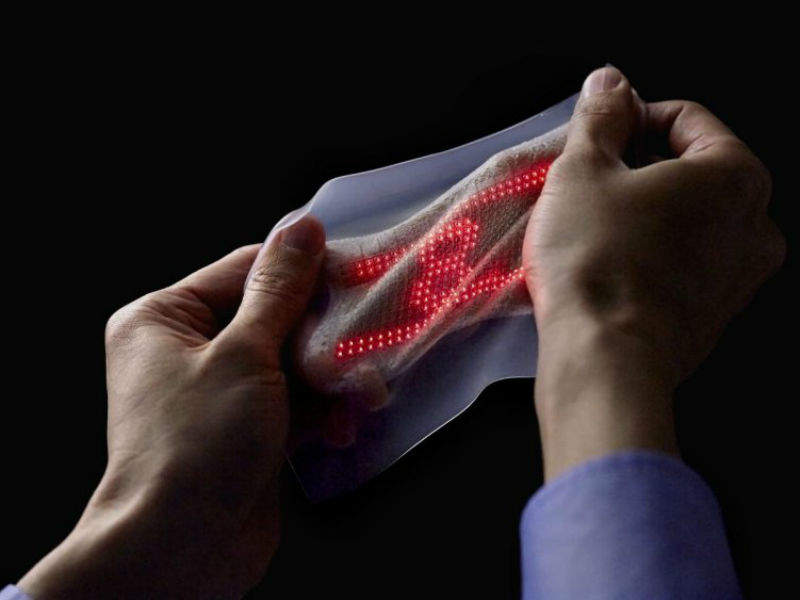
Researchers have developed an ultrathin, highly elastic skin display device that can show the moving waveform of an electrocardiogram recorded by a breathable, on-skin electrode sensor.
The skin display was developed in collaboration by researchers at the University of Tokyo’s Graduate School of Engineering and Dai Nippon Printing, a leading Japanese printing company. It consists of a 16 x 24 array of micro LEDs and stretchable wiring mounted on a rubber sheet. The display is stretchable by as much as 45% of its original length.
The wearable medical device fits tightly onto the patient and combines with a wireless communication module to transmit biometric data to smartphones or cloud-hosted storage. The technology has potential home healthcare applications.
Lead author of the study and professor at the University of Tokyo’s Graduate School of Engineering, Takao Someya, said: “The current aging society requires user-friendly wearable sensors for monitoring patient vitals in order to reduce the burden on patients and family members providing nursing care. Our system could serve as one of the long-awaited solutions to fulfil this need, which will ultimately lead to improving the quality of life for many.”
Advances in semiconductor technology have resulted in wearable devices that can monitor health by first measuring vital signs or taking an electrocardiogram, and then transmitting the data wirelessly to a smartphone. The readings or electrocardiogram waveforms can be displayed on the screen in real time or sent to either the cloud or a memory device where the information is stored.
How well do you really know your competitors?
Access the most comprehensive Company Profiles on the market, powered by GlobalData. Save hours of research. Gain competitive edge.

Thank you!
Your download email will arrive shortly
Not ready to buy yet? Download a free sample
We are confident about the unique quality of our Company Profiles. However, we want you to make the most beneficial decision for your business, so we offer a free sample that you can download by submitting the below form
By GlobalDataThis skin electronics system aims to go a step further by enhancing information accessibility for people such as the elderly or the infirm who tend to have difficulty operating existing devices and interfaces.
The new integrated system combines a flexible, deformable display with a lightweight sensor composed of a breathable nanomesh electrode and wireless communication module. Medical data measured by the sensor, such as an electrocardiogram, can either be sent wirelessly to a smartphone for viewing or to the cloud for storage.
The smart skin is far more resistant to the wear and tear of stretching than previous wearable displays. This is because it is built on a novel structure that minimises the stress resulting from stretching on the juncture of hard materials, such as the micro LEDs, and soft materials, such as the elastic wiring which is a leading cause of damage for other models.
It is the first stretchable display to achieve superior durability and stability in air, according to the researchers. During tests, not a single pixel failed in the matrix-type display while attached onto the skin and continuously subjected to the contracting motion of the body. The nanomesh skin sensor can be worn on the skin constantly for a week without causing inflammation.
The integrated skin display could be brought to market within the next three years if the reliability of the device can be improved by optimising its structure, enhancing the production process for high integration, and overcoming technical challenges such as large-area coverage.




